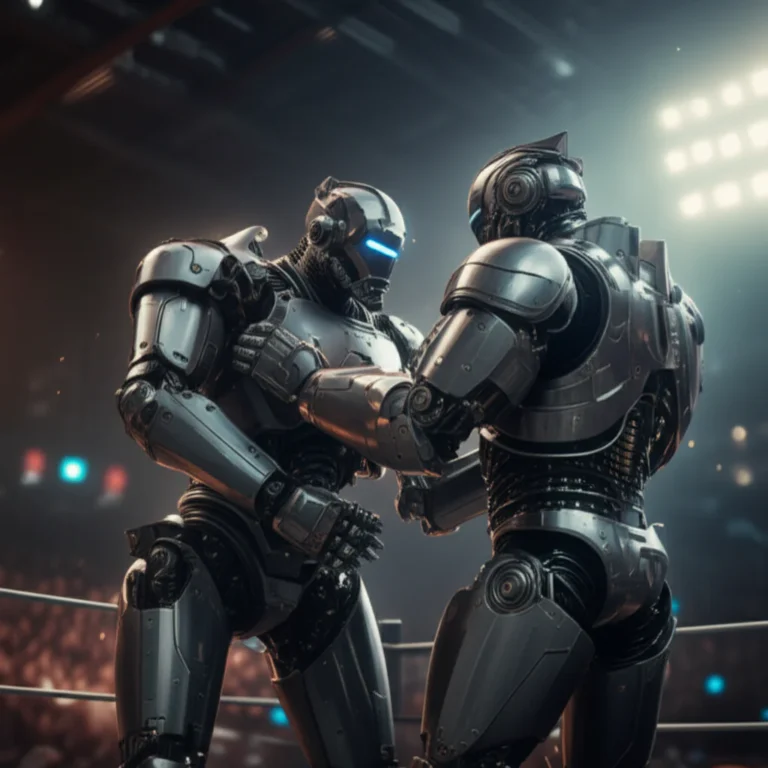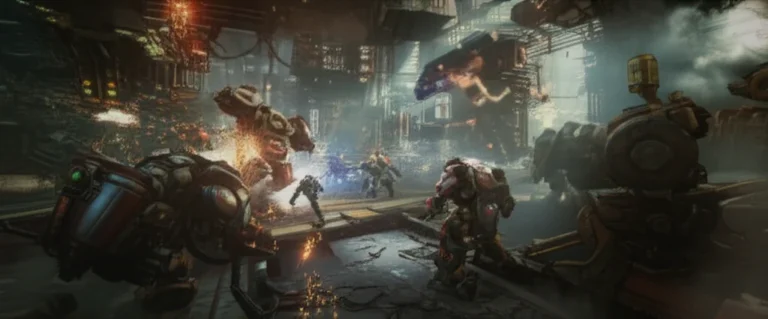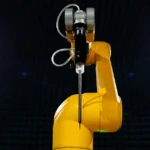Support our educational content for free when you buy through links on our site. Learn more
Was WWF Real Wrestling? 🤼♂️ The Truth Revealed (2025)
If you’ve ever found yourself wondering, “Was WWF real wrestling or just scripted entertainment?”, you’re not alone. For decades, fans and skeptics alike have debated the authenticity of the World Wrestling Federation’s jaw-dropping matches, larger-than-life characters, and dramatic storylines. Spoiler alert: WWF, now WWE, isn’t a legitimate competitive sport in the traditional sense—but that doesn’t mean it’s any less thrilling or impressive.
In this article, we’ll unravel the fascinating blend of athleticism, storytelling, and showmanship that defines WWF wrestling. From the golden age of Hulk Hogan to the global spectacle it is today, we’ll explore the history, the culture, and the physical demands behind the curtain. Plus, our Robot Wrestling™ experts will share surprising parallels between human wrestling and robot battles, revealing why both worlds captivate millions. Curious about the real risks wrestlers face, or how scripted drama keeps fans hooked? Keep reading—your questions are about to be answered!
Key Takeaways
- WWF wrestling is scripted entertainment, not a legitimate competitive sport, but requires real athleticism and skill.
- “Sports entertainment” blends storytelling, character work, and choreographed moves to create a unique spectacle.
- Wrestlers face significant physical risks despite predetermined outcomes, making their performances genuinely demanding.
- Regional styles like Lucha Libre and Puroresu offer diverse wrestling flavors with varying degrees of realism.
- Robot Wrestling™ shares similarities with WWF in blending choreography and real-time action, emphasizing entertainment and precision.
- Understanding kayfabe and wrestling’s conventions helps fans appreciate the craft beyond “real or fake” debates.
Ready to dive deeper into the world of WWF wrestling and discover what makes it so captivating? Let’s get started!
Table of Contents
- ⚡️ Quick Tips and Facts
- 🤼♂️ Unmasking the Spectacle: The Truth About WWF Wrestling
- 🎭 The Art of Illusion: Understanding Pro Wrestling’s Unique Conventions
- 💪 Behind the Brawn: The Grueling Reality of a Wrestler’s Life
- 🌍 Beyond the Big Leagues: Exploring Regional Wrestling Styles and Subgenres
- 🗣️ The Roar of the Crowd: Culture, Fandom, and Community
- 🤔 Common Misconceptions About Pro Wrestling
- 🤖 Robot Wrestling™ Weighs In: Our Expert Take
- ✅ Our Top Recommendations for New Fans
- ❌ Things to Avoid When Discussing Pro Wrestling
- 🏆 The Legacy of WWF/WWE: Impact on Pop Culture
- Conclusion: The Enduring Magic of Sports Entertainment
- 🔗 Recommended Links
- ❓ FAQ: Your Burning Questions Answered
- 📚 Reference Links
⚡️ Quick Tips and Facts
Welcome to the ultimate deep dive on the age-old question: Was WWF real wrestling? At Robot Wrestling™, we’re all about the thrill of the fight—whether it’s steel-clad robots or human grapplers in the ring. So, let’s kick things off with some quick, no-nonsense facts to set the stage:
- WWF (now WWE) is NOT a legitimate competitive sport. It’s a form of athletic theater with scripted outcomes and choreographed moves. ✅ Entertainment, ❌ real competition.
- The term “sports entertainment” was coined by Vince McMahon himself to describe WWF’s unique blend of drama and athleticism.
- Kayfabe is the industry’s code of maintaining the illusion of reality, both in and out of the ring.
- Wrestlers are highly trained athletes who perform dangerous stunts, risking injury despite the scripted nature.
- The infamous “Brawl For All” tournament (1998) was WWF’s rare attempt at real fights—and it was a disaster.
- Regional wrestling styles like Lucha Libre (Mexico) and Puroresu (Japan) offer different flavors, some closer to legitimate competition.
- Wrestling’s roots trace back to catch wrestling and carnival shows, evolving into the spectacle we know today.
- Despite being scripted, wrestling has a massive global fanbase and cultural impact.
Curious how all this fits together? Stick with us—we’ll unpack every twist and turn, from the history to the culture, and even share our Robot Wrestling™ expert take. Ready to rumble? Let’s go!
🤼♂️ Unmasking the Spectacle: The Truth About WWF Wrestling
If you’ve ever wondered, “Was WWF real wrestling?” you’re not alone. The answer is a fascinating mix of athleticism, storytelling, and showmanship. Let’s peel back the curtain.
The Golden Age of “Sports Entertainment”: A Brief History of WWF’s Rise
The WWF exploded in popularity during the 1980s, thanks to Vince McMahon’s vision of transforming regional wrestling circuits into a national entertainment powerhouse. This era featured iconic stars like Hulk Hogan and “Macho Man” Randy Savage, whose larger-than-life personas captivated millions.
- Scripted outcomes: By this time, matches were no longer genuine contests but carefully choreographed performances designed to thrill.
- Character-driven narratives: Wrestlers adopted “gimmicks” — think The Undertaker’s supernatural mystique or Stone Cold Steve Austin’s rebellious antihero persona.
- Entertainment over sport: Vince McMahon famously testified in 1989 that wrestling was not a legitimate sport but entertainment, leading to deregulation in states like New Jersey.
From Territories to Global Phenomenon: How WWF Conquered the World
Before WWF’s rise, wrestling was a patchwork of regional promotions with their own champions and styles. WWF’s national TV deals and pay-per-view events unified the landscape, turning wrestling into a global spectacle.
- Media savvy: WWF mastered TV production, entrances, and pyrotechnics to create a captivating show.
- Merchandising: From action figures to video games, WWF became a cultural juggernaut.
- International reach: While the US market dominated, WWF’s influence spread worldwide, inspiring local wrestling scenes.
🎭 The Art of Illusion: Understanding Pro Wrestling’s Unique Conventions
Professional wrestling isn’t just about punches and slams—it’s a carefully crafted performance art blending athleticism with theater.
Storytelling in the Squared Circle: Crafting Compelling Narratives
Every match tells a story. Whether it’s a heroic “face” battling a villainous “heel” or a complex rivalry, the drama hooks fans emotionally.
- Feuds and alliances: Long-term story arcs keep audiences invested.
- Match stipulations: From cage matches to “Hell in a Cell,” rules often serve the storyline.
- Audience interaction: Wrestlers play to the crowd, improvising reactions and chants.
The Unwritten Rules: Kayfabe, Work, and Shoot Explained
- Kayfabe: The sacred code of maintaining the illusion that wrestling is real. Wrestlers stay in character even off-camera to preserve the mystique.
- Work: A scripted, choreographed match or segment.
- Shoot: A real, unscripted moment or fight. Rare but sometimes happens, especially when tensions boil over.
This blend of reality and fiction is what makes wrestling so unique—and why it confuses newcomers.
💪 Behind the Brawn: The Grueling Reality of a Wrestler’s Life
Don’t be fooled—while the outcomes are scripted, the physical demands on wrestlers are very real.
Training Regimen: More Than Just Posing
Wrestlers undergo intense training to master:
- Technical wrestling moves (throws, holds, submissions)
- Stunt work (high-flying jumps, bumps)
- Strength and conditioning to endure grueling schedules
- Mic skills for promos and character work
Our Robot Wrestling™ engineers appreciate this blend of precision and showmanship—it’s like programming a robot to perform complex maneuvers while engaging the crowd.
The Physical Toll: Injuries, Risks, and Longevity
Despite choreography, injuries are common:
| Injury Type | Common Causes | Impact on Career |
|---|---|---|
| Concussions | Head impacts, bumps | Long-term brain damage |
| Joint injuries | Falls, awkward landings | Surgery, rehab |
| Muscle strains | Overexertion | Time off, performance dip |
| Chronic pain | Repeated trauma | Early retirement |
Many wrestlers face shortened careers and health issues, underscoring the real risks behind the spectacle.
🌍 Beyond the Big Leagues: Exploring Regional Wrestling Styles and Subgenres
Wrestling is a global phenomenon with diverse styles that blend sport and entertainment differently.
Lucha Libre, Puroresu, and More: A Global Grappling Tour
- Lucha Libre (Mexico): Known for colorful masks, high-flying acrobatics, and fast-paced action. While scripted, it emphasizes athleticism and tradition.
- Puroresu (Japan): Focuses on “fighting spirit” and realistic strikes, with less emphasis on theatrics. Matches often feel more like real fights.
- British Catch Wrestling: Technical grappling and submission holds with a focus on clean competition.
Independent Circuits: Where Future Stars Are Forged
Smaller promotions worldwide serve as breeding grounds for talent, often blending real competition with entertainment. Many WWE stars got their start here, honing skills before the big stage.
🗣️ The Roar of the Crowd: Culture, Fandom, and Community
Wrestling’s magic lies not just in the ring but in its passionate fanbase.
Why We Love It: The Enduring Appeal of Pro Wrestling
- Emotional storytelling: Fans connect with characters and narratives.
- Spectacle: The combination of athleticism, drama, and pageantry is irresistible.
- Community: Wrestling events foster camaraderie among fans.
The Evolution of Fandom: From Secret to Celebration
In the past, fans hid their love for wrestling due to stigma. Today, “smart marks” openly enjoy the scripted nature while appreciating the craft. The WWE Network and social media have created global communities.
🤔 Common Misconceptions About Pro Wrestling
Let’s bust some myths that often trip up newcomers.
Is It All Fake? Separating Fact from Fiction
- Scripted outcomes? Yes.
- Fake moves? No. Wrestlers perform real, dangerous stunts.
- Athleticism? Absolutely. Wrestlers train hard and are elite athletes.
- Is it “cheating”? No—it’s a unique blend of sport and theater.
The Athleticism Argument: Are Wrestlers “Real” Athletes?
Wrestlers endure grueling schedules, physical punishment, and require strength, agility, and endurance comparable to other professional athletes. Our Robot Wrestling™ team respects this dedication—it’s like programming a robot to perform complex, high-risk maneuvers flawlessly under pressure.
🤖 Robot Wrestling™ Weighs In: Our Expert Take
As fans and engineers who design robots for the official Robot Wrestling League, we see fascinating parallels:
- Choreography vs. Competition: Like pro wrestling, robot wrestling blends programmed moves with real-time improvisation.
- Entertainment Value: Both rely on storytelling and crowd engagement, not just brute force.
- Physical Risk: Robots face mechanical failures; wrestlers face bodily harm. Both require resilience and precision.
Our advice? Appreciate WWF/WWE for what it is: a masterclass in sports entertainment that combines athleticism, drama, and spectacle—just like our favorite robot battles. Want to learn how to build your own wrestling robot? Check out our Ultimate Guide 🤖.
✅ Our Top Recommendations for New Fans
If you’re new to wrestling and want to dive in without getting overwhelmed, here’s our starter pack:
- Watch classic WWF/WWE matches featuring legends like The Undertaker and Bret Hart to see storytelling in action.
- Explore international styles like Lucha Libre for high-flying excitement or Puroresu for hard-hitting realism.
- Follow independent promotions such as AEW or NJPW for fresh talent and innovative matches.
- Join fan communities online or at live events to share the experience.
Remember, wrestling is about fun and engagement, not just wins and losses.
❌ Things to Avoid When Discussing Pro Wrestling
- ❌ Calling it “fake” as an insult—it’s scripted but requires immense skill and risk.
- ❌ Assuming all wrestlers are “just actors” — many have legitimate combat sports backgrounds.
- ❌ Comparing wrestling directly to MMA or boxing without context—they serve different purposes.
- ❌ Ignoring the cultural significance and fan passion behind the spectacle.
🏆 The Legacy of WWF/WWE: Impact on Pop Culture
WWF/WWE’s influence extends far beyond the ring:
- Mainstream celebrities: Dwayne “The Rock” Johnson and John Cena transitioned to Hollywood stardom.
- Language: Terms like “body slam” and “smackdown” entered everyday speech.
- Crossovers: Wrestling inspired movies, TV shows, and even politics.
- Global reach: WWE events draw millions worldwide, shaping entertainment culture.
It’s a testament to how scripted spectacle can become a beloved cultural institution.
Conclusion: The Enduring Magic of Sports Entertainment
So, was WWF real wrestling? The answer is a definitive no—at least not in the traditional sense of a competitive sport. WWF, now WWE, is a dazzling blend of athleticism, storytelling, and theatrical spectacle. It’s a carefully scripted performance where outcomes are predetermined, but the physical risks and skill levels are very real. Wrestlers are elite athletes who put their bodies on the line to entertain millions worldwide.
Our Robot Wrestling™ team sees fascinating parallels between human pro wrestling and robot battles. Both combine choreography with real-time improvisation, both require precision and resilience, and both captivate audiences through storytelling and spectacle. While WWF’s infamous “Brawl For All” experiment showed that real fights don’t always translate well in a scripted environment, it also highlighted the unique place wrestling holds in sports entertainment.
If you’re a fan of drama, athleticism, and larger-than-life characters, WWF/WWE offers a thrilling experience that transcends the question of “real or fake.” And if you’re intrigued by the mechanics of combat and performance, exploring robot wrestling might just be your next passion.
🔗 Recommended Links
Ready to dive deeper or pick up some wrestling gear and books? Check out these top picks:
- WWE Official Website: WWE.com
- Classic Wrestling Documentaries & Books:
- Robot Wrestling League Gear and Guides:
- Robot Wrestling™ Official Site
- “How Do I Build a Robot for Robot Wrestling? Ultimate Guide (2025)” — Read Here
- Brawl For All Tournament Footage & Analysis:
- Search “WWF Brawl For All” on YouTube
- 👉 Shop Wrestling Merchandise:
- Robot Wrestling Components:
- Motors & Controllers: Amazon Robotics
- Battle Robot Kits: RobotShop
❓ FAQ: Your Burning Questions Answered
Was WWF wrestling scripted or real?
WWF wrestling is scripted entertainment with predetermined outcomes. While the moves and stunts are physically demanding and real, the matches are choreographed to tell a story and engage fans. This blend of athleticism and theater is why WWF calls itself “sports entertainment.” Vince McMahon himself confirmed this in legal testimony, and the industry embraces the scripted nature while maintaining kayfabe to preserve the illusion.
Read more about “When Did People Stop Thinking Wrestling Was Real? 🤔 (2025)”
How does the Robot Wrestling League compare to traditional wrestling?
Robot Wrestling™ shares the competitive spirit and spectacle of traditional wrestling but replaces human athletes with custom-built robots. Unlike WWF’s scripted matches, robot battles often involve programmed sequences combined with real-time control, allowing for both planned maneuvers and spontaneous tactics. The focus is on engineering skill, strategy, and entertainment value.
Read more about “Robot Wrestling Unleashed: 8 Expert Secrets to Dominate (2025) 🤖🔥”
Are robot battles in the Robot Wrestling League choreographed?
Robot battles feature a mix of pre-programmed moves and live operator control, creating a dynamic and unpredictable show. While some sequences are planned to maximize excitement and safety, the actual matches can involve improvisation and adaptation, much like a wrestling promo or match. This hybrid approach balances reliability with thrilling competition.
What makes robot wrestling different from human wrestling like WWF?
- Physicality: Human wrestling involves real bodies risking injury; robots face mechanical failures and damage.
- Control: Humans perform moves instinctively; robots rely on programming and operator input.
- Storytelling: WWF emphasizes character and narrative; robot wrestling focuses more on engineering innovation and battle tactics.
- Audience: Both entertain, but robot wrestling appeals strongly to tech enthusiasts and STEM fans.
Can robots in the Robot Wrestling League perform real combat moves?
Robots can execute mechanical analogs of wrestling moves—grappling, lifting, flipping, and striking—within their design limits. While they don’t have the fluidity or improvisational nuance of humans, advances in robotics allow for increasingly complex and effective maneuvers, making matches exciting and competitive.
Read more about “How Do I Build a Robot for Robot Wrestling? 🤖 Ultimate Guide (2025)”
Is the Robot Wrestling League a form of sports entertainment like WWF?
Yes, Robot Wrestling™ is a form of sports entertainment, blending competition with showmanship. Like WWF, it values audience engagement, dramatic moments, and storytelling—though the “characters” are machines and their “moves” are programmed or remotely controlled.
How are robot designs optimized for battles in the Robot Wrestling League?
Designers focus on:
- Durability: Reinforced chassis and armor to withstand hits.
- Mobility: Powerful motors and agile mechanisms for quick maneuvers.
- Weaponry: Effective grappling arms, spinning blades, or lifting devices.
- Control Systems: Responsive remote controls and sensors for precision.
Our engineers recommend iterative testing and learning from each battle to refine designs, much like wrestlers perfect their moves in the ring.
📚 Reference Links
- Wikipedia: Professional Wrestling
- MixedMartialArts.com: When the WWE Had a Real Fight
- Chief Delphi Forum: WWF- real or fake? or both??? – Chit-Chat
- WWE Official Site: WWE.com
- Robot Wrestling™ Official Site: RobotWrestling.org
Thanks for joining us on this wild ride through the world of WWF wrestling and its fascinating intersection with robot wrestling! Ready to build your own champion? Check out our Ultimate Robot Wrestling Guide and get started today! 🤖🔥






